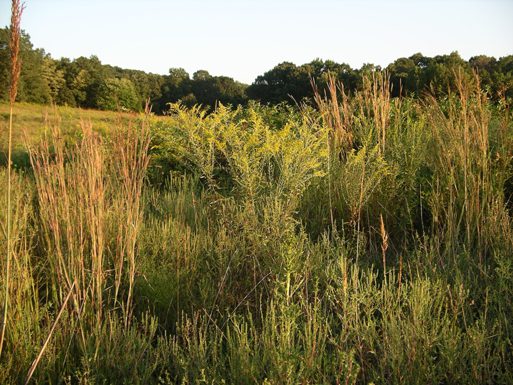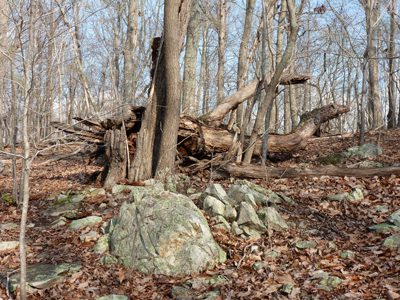Rattlesnakes can lower your taxes: The Wildlife Conservation Land Program

The headquarters of the Internal Revenue Service in Washington bears a quote from former U.S. Supreme Court Justice Oliver Wendell Holmes: “Taxes are what we pay for civilized society.” Given the sticker shock many of us received when we opened our property revaluation notices, I imagine plenty of folks wouldn’t mind our society being a little less civilized.
To be clear, these revaluations won’t necessarily lead to paying higher taxes – we won’t know for sure until the county commissioners set the tax rate – but it still causes concern for people who are land-rich and cash-strapped. What’s a landowner to do? What if I told you the answer to your tax woes might be rattlesnakes?
Property owners have long enjoyed paying lower taxes on production-oriented farmland and timberland through a program known as Present Use Value (PUV). If you had a nice stand of hardwoods you never intended to cut, maybe because you wanted to protect a shady creek where wildflowers bloom and songbirds flock in early spring or your kids retreat to catch crawdads on hot summer days, you were out of luck. Maintaining this forest didn’t qualify as forestry PUV. If you had an abandoned field you mowed or disked* or burned on occasion, maybe because you liked to hunt rabbits or listen to the song of the bobwhite quail, you didn’t get a break. Using a tractor on this land didn’t mean it qualified as agricultural PUV.
 A new state law went into effect in 2010 to address this problem and to protect declining wildlife habitat. The Wildlife Conservation Land Program (WCLP) is a visionary effort that gives North Carolina landowners who do right by wildlife some relief on their property taxes. If a tract of land is confirmed as being a priority habitat or having a protected wildlife species, the landowner can enter into an agreement with the N.C. Wildlife Resources Commission (NCWRC) then submit an application to the county tax office to have the property assessed at a lower value. Biologists for the NCWRC have identified six priority habitats across the state – longleaf pine forest, early successional habitat, small wetland community, stream and riparian zone, rock outcrop and bat cave. A protected wildlife species is defined as any animal identified by the NCWRC as endangered, threatened or of special concern.
A new state law went into effect in 2010 to address this problem and to protect declining wildlife habitat. The Wildlife Conservation Land Program (WCLP) is a visionary effort that gives North Carolina landowners who do right by wildlife some relief on their property taxes. If a tract of land is confirmed as being a priority habitat or having a protected wildlife species, the landowner can enter into an agreement with the N.C. Wildlife Resources Commission (NCWRC) then submit an application to the county tax office to have the property assessed at a lower value. Biologists for the NCWRC have identified six priority habitats across the state – longleaf pine forest, early successional habitat, small wetland community, stream and riparian zone, rock outcrop and bat cave. A protected wildlife species is defined as any animal identified by the NCWRC as endangered, threatened or of special concern.
This is where the rattlesnakes come in. Even though many people fear them and loathe them, Crotalus horridus is one of those protected species. Lower taxes might make rattlesnakes more appealing. Not to worry, plenty of other species also are eligible. People might be more inclined to protect habitat for bald eagles, loggerhead shrikes, yellow-bellied sapsuckers or mole salamanders. That said, it often can be easier to document having one of the six priority habitats listed above than a single target species. Shady creeks, brushy fields and rock outcrops are more obliging when it comes to being photographed, and you might have records on hand that support your history of land management.
If this all sounds too good to be true, do know there are a few restrictions. To be eligible, you need to have owned the property for at least five years. You also need to be able to document the presence of a protected species and demonstrate that the land has been managed as a priority habitat for the previous three years. A priority habitat must consist of at least 20 contiguous acres, and a landowner can claim no more than 100 acres per county. If you think your property meets these qualifications and you want to learn more, contact NCWRC biologist Brad Howard at 828-294-2605 or brad.howard@ncwildlife.org.
As a society, we have placed a value on working landscapes. We’ve been willing to accept less money going into the public coffers because we realize we all benefit from the production of food and timber. The WCLP recognizes that we also benefit from having private landowners manage their tracts for priority wildlife species. This is especially important in places like the Uwharries, where it’s possible to have a fully functioning ecosystem on a landscape scale. Our public lands provide a solid foundation of protected habitat, but the Pee Dee National Wildlife Refuge and Morrow Mountain State Park are isolated, and much of the Uwharrie National Forest is fragmented. Private landowners in the region knit this patchwork together, and now there’s a program in place to reward their good stewardship.
*Disking – Tilling soil to reduce competing vegetation. Definition from http://www.state.sc.us/forest/rbg.htm.